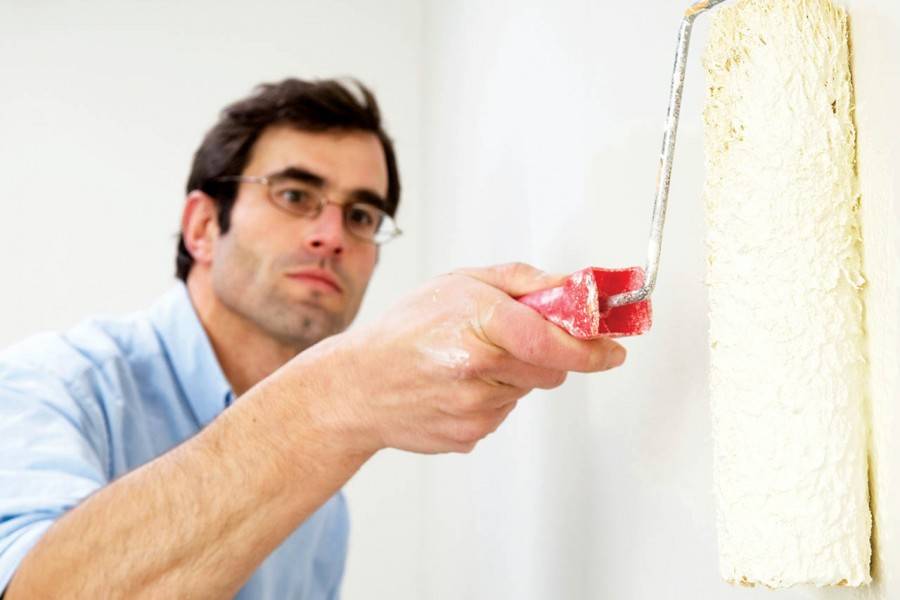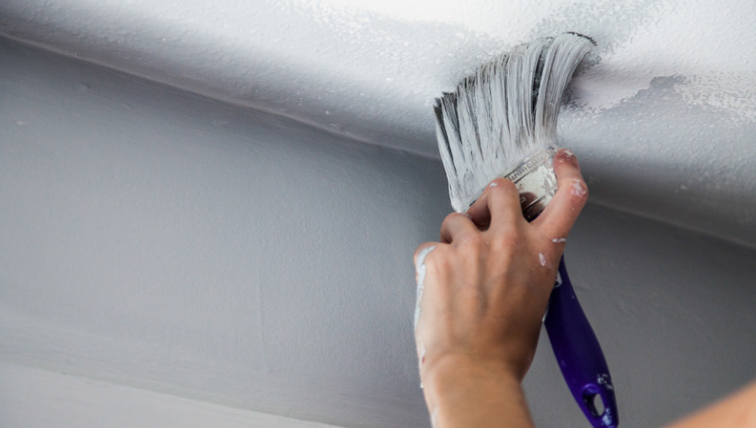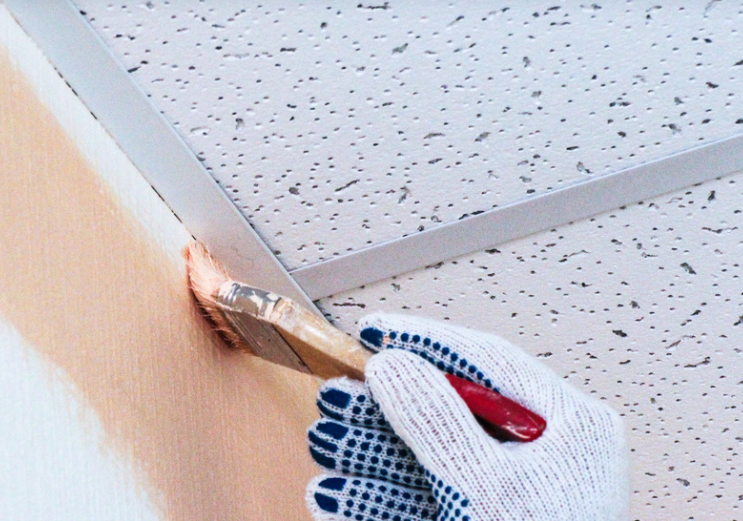A beginner’s guide to painting your own home from scratch.
In this article we cover:
- How much paint do you need for a room?
- Should you use a brush or a roller with emulsion?
- Which to do first: hall, stair, landing
- What is cutting in and tips to achieve a perfect finish
- Link to full DIY painting guide
How much paint do I need?
Impossible to answer accurately since every situation is different. In my experience a small room will need 2.5 to 3 litres of paint; a large room at least 5 litres and an average hall, stairs and landing in the region of 5 to 7 litres.
If you’re not sure, err on the higher side. And remember… if you’re using a paint colour which is not off-the shelf and has to be mixed, buying a 10 litre bucket may work out cheaper and be more consistent in colour than buying 5+5 or even 5+3.

Should I use a brush or a roller to emulsion my ceiling?
These days a roller is almost always used; a brush is simply too time consuming and tiring.
However, there are certain ceilings e.g. those in Victorian properties which may be damaged extensively if you use a standard 9″ roller – the suction is too great and will pull off the existing paint.
In that case you have two alternatives: use a mini-roller carefully or use a wide brush.
Hall, stairs and landing: which should I paint first?
Personally I do ceilings first, then walls, then woodwork. I would also break down the area into the three distinct sections so you’re not all over the place, particularly when tackling a large room.
If you’re unsure about being able to “cut-in” accurately you may find it better to paint the woodwork first, wait for it to dry completely, then apply masking tape to the edges you’ve just painted and proceed to paint the walls. The downside of this approach is it takes much longer because you have to wait for the paint on the woodwork to dry. The paint will remain soft for a time until it cures completely.
Apply ordinary masking tape too soon and you risk pulling off the paint you have just applied. Safe-release masking tape can potentially get around this but it is more expensive and may still not be foolproof.

What is ‘cutting-in’?
To ‘cut-in’ means painting at the dividing line between two surfaces – usually the ceiling and walls. The aim is to get a razor sharp line between wall and ceiling.
A 9″ or 18″ roller will not be able to cover right into the edge between the ceiling and the wall so switch to the mini-roller if the distance between the ceiling and wall is an inch or more. Very carefully roll out the paint as close to the ceiling as you can get without getting paint on it.
You have two choices here. Either use a 2″ synthetic no-loss brush or, if you are not so confident, a 15mm sash brush. The synthetic brush holds plenty of paint and lays it down over a broader area than the sash brush but being larger you may find it a little more difficult to work with.

A sash brush is an oval brush which not only holds lots of paint but spreads out to form a consistent line of paint without stray bristles sticking out.
Standard non-synthetic, flat bristle brushes are not suitable for cutting-in since they do not hold enough paint and tend to have stray bristles which can put coloured paint onto a nice white ceiling.
Extracted from The Complete DIY Guide to Painting Your Home by Brian Cahill, exclusive to Selfbuild+.







